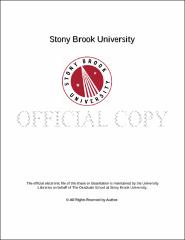| dc.identifier.uri | http://hdl.handle.net/1951/60227 | |
| dc.identifier.uri | http://hdl.handle.net/11401/71494 | |
| dc.description.sponsorship | This work is sponsored by the Stony Brook University Graduate School in compliance with the requirements for completion of degree. | en_US |
| dc.format | Monograph | |
| dc.format.medium | Electronic Resource | en_US |
| dc.language.iso | en_US | |
| dc.publisher | The Graduate School, Stony Brook University: Stony Brook, NY. | |
| dc.type | Dissertation | |
| dcterms.abstract | An engaging film captures attention and at times may cause viewers to lose focus on the world beyond the screen. One way in which filmmakers command viewers' attention is by generating narrative suspense, which arises when potential negative outcomes become salient. In this series of experiments, I tested the theory that " hot spots," moments that make negative outcomes salient, will narrow the viewer's attentional focus compared to " cold spots," moments that do not emphasize negative outcomes. I measured attentional tuning through latencies in response time (RT) to audio probes as participants viewed suspenseful film excerpts. I also administered post-viewing recognition memory tests for still images taken from hot and cold spots. In Experiment 1a, I compared response times to probes at hot and cold spots and later tested recognition memory for the mirror orientation of stills taken from these spots. As predicted, participants demonstrated slower RT and missed more probes at hot spots than at cold spots, and they correctly recognized the orientation of more hot spot images than cold spot images. In Experiment 1b, I recorded the same measurements but used randomized still images rather than videos. In this scrambled context, as predicted, RT effects disappeared. Unexpectedly, orientation recognition effects remained. In my next experiment, I investigated if the attentional tuning effect extended beyond the immediate processing of the hot spots themselves. In Experiment 2a, I compared RT to probes during the camera shots immediately following the hot and cold spots and administered an old/new recognition memory test for still images from hot and cold spots. A control experiment (2b) with still images found no difference in RT, but better recognition for hot over cold spot images. In Experiment 3, I manipulated the temporal locations of the hot and cold spots between versions of the film excerpts and again measured response times to probes during the shots immediately following the hot and cold spots. I again found the predicted effects in RT to probes following hot and cold spots. These findings provide new evidence of changes in attentional tuning during the experience of film narratives. | |
| dcterms.available | 2013-05-24T16:38:15Z | |
| dcterms.available | 2015-04-24T14:47:45Z | |
| dcterms.contributor | Zelinsky, Gregory J. | en_US |
| dcterms.contributor | Gerrig, Richard J. | en_US |
| dcterms.contributor | Freitas, Antonio L. Reich, Jacqueline | en_US |
| dcterms.creator | Bezdek, Matthew A. | |
| dcterms.dateAccepted | 2013-05-24T16:38:15Z | |
| dcterms.dateAccepted | 2015-04-24T14:47:45Z | |
| dcterms.dateSubmitted | 2013-05-24T16:38:15Z | |
| dcterms.dateSubmitted | 2015-04-24T14:47:45Z | |
| dcterms.description | Department of Experimental Psychology | en_US |
| dcterms.extent | 65 pg. | en_US |
| dcterms.format | Application/PDF | en_US |
| dcterms.format | Monograph | |
| dcterms.identifier | http://hdl.handle.net/1951/60227 | |
| dcterms.identifier | http://hdl.handle.net/11401/71494 | |
| dcterms.issued | 2012-05-01 | |
| dcterms.language | en_US | |
| dcterms.provenance | Made available in DSpace on 2013-05-24T16:38:15Z (GMT). No. of bitstreams: 1
StonyBrookUniversityETDPageEmbargo_20130517082608_116839.pdf: 41286 bytes, checksum: 425a156df10bbe213bfdf4d175026e82 (MD5)
Previous issue date: 1 | en |
| dcterms.provenance | Made available in DSpace on 2015-04-24T14:47:45Z (GMT). No. of bitstreams: 3
StonyBrookUniversityETDPageEmbargo_20130517082608_116839.pdf.jpg: 1934 bytes, checksum: c116f0e1e7be19420106a88253e31f2e (MD5)
StonyBrookUniversityETDPageEmbargo_20130517082608_116839.pdf.txt: 336 bytes, checksum: 84c0f8f99f2b4ae66b3cc3ade09ad2e9 (MD5)
StonyBrookUniversityETDPageEmbargo_20130517082608_116839.pdf: 41286 bytes, checksum: 425a156df10bbe213bfdf4d175026e82 (MD5)
Previous issue date: 1 | en |
| dcterms.publisher | The Graduate School, Stony Brook University: Stony Brook, NY. | |
| dcterms.subject | Attention, Films, Suspense, Transportation | |
| dcterms.subject | Cognitive psychology à Film studies | |
| dcterms.subject | Cognitive psychology Ð Film studies | |
| dcterms.title | Changes in Attentional Focus During Suspenseful Film Viewing | |
| dcterms.type | Dissertation | |

